Email Marketing Lead Generation 101 (+How To, Strategies, & Tools)
Quick Summary
This article shares actionable strategies and tools across lead capture, automation, and CRM, and shows how Growform’s high-converting multi-step forms help marketers capture better leads with less friction.
Looking to Generate Leads From Email Marketing?
Although email marketing has been around for over 50 years, it’s still one of the most effective ways to generate leads. And the numbers make a pretty solid case:
- Every $1 spent on email marketing brings in up to $42 in return
- Over 4.5 billion people actively use email in 2025
But like every system, you need to set it up correctly to generate the right quantity and quality of leads.
In this Growform article, we’ll walk you through how to build a high-performing lead generation funnel from email marketing.
Why Listen to Us?
At Growform, we specialize in high-converting forms designed to maximize lead generation. Our platform is trusted by marketers, agencies, and growth teams to build forms that consistently deliver better leads.
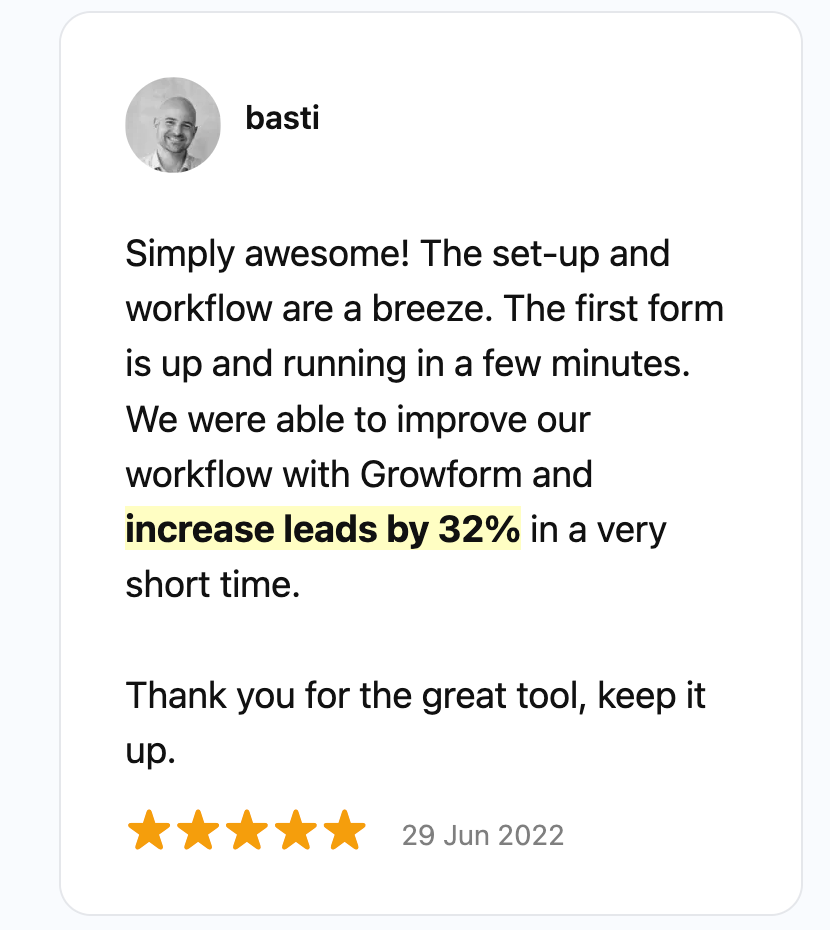
This guide is built on practical insights from real campaigns, with a clear focus on what drives email marketing results.
What Is Email Marketing Lead Generation?
Email marketing lead generation is the process of using email to attract, capture, and nurture potential customers (leads) until they’re ready to buy.
It usually starts with a lead magnet (like a free guide, template, or tool) that people get in exchange for their email address.
From there, they’re added to an email sequence designed to build trust, deliver value, and guide them toward taking action (like booking a call or signing up for a free trial).
Why Email Stands Out for Lead Generation
- Low Cost, High ROI: Unlike paid ads that bill you per impression or click, email lets you reach your entire list for a flat, predictable cost. In fact, 30% of marketers cite email marketing as the digital marketing channel with the highest ROI.
- Scales with Automation: Email marketing tools can welcome new leads, educate them about your offerings, and guide them through your sales funnel, without constant manual input.
- Direct Access to Inboxes: Emails land right in users’ inboxes, giving them a better chance of being seen and engaged with, compared to social media posts or display ads.
- Personalized, Behavior-Driven Messaging: With email, you can send highly targeted content based on how users interact with your brand.
How to Generate Leads Through Email Marketing
1. Identify Your Target Audience and Offer an Irresistible Incentive
Successful email lead gen starts with knowing who you want on your list and why they’d join.
Take time to define your target audience: what are their demographics, needs, and pain points? The more you understand your ideal prospects, the better you can craft an offer that speaks to them.
In email marketing, that enticing offer is often called a lead magnet, a free resource or perk people get in exchange for their email. This could be anything from a helpful e-book or exclusive research to a discount code, free trial, or useful template.
For example, Hubspot offers different CRM templates on Google Sheets in exchange for emails:
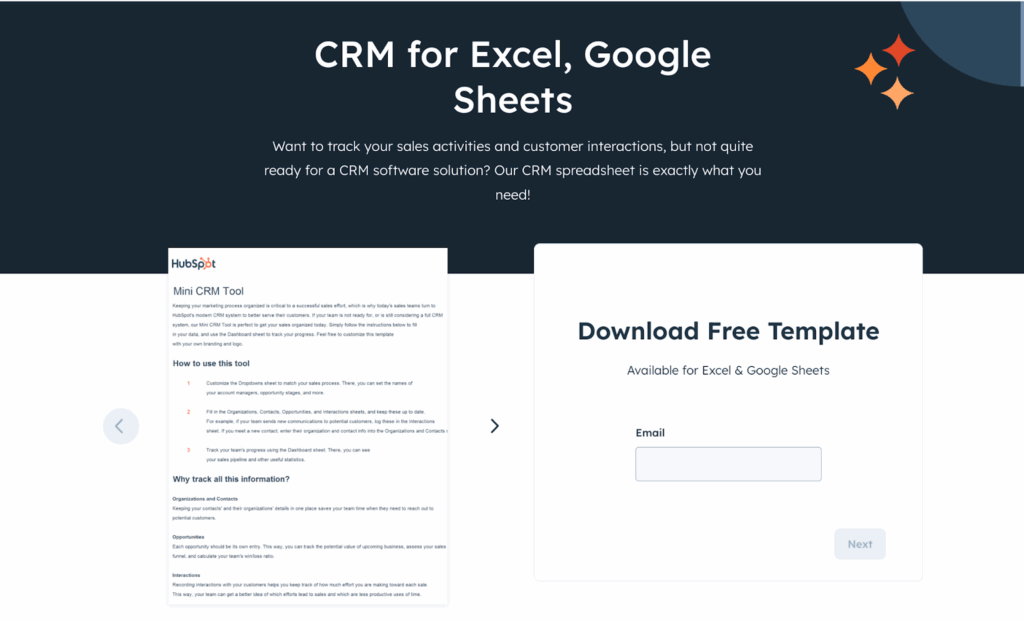
The key is that it must be concrete and valuable enough to overcome a person’s hesitation to share their contact info.
For example, a B2B software company might offer a “Free 10-page industry trend report,” whereas a B2C fitness brand might give “20% off your first order” or a free workout guide PDF.
The best lead magnets:
- Are easy to consume
- Deliver immediate value
- And subtly position your product/service as a helpful solution.
Put simply, if you wouldn’t trade your own email for that offer, keep brainstorming until you find something more compelling.
2. Build a Simple Opt-In Funnel (Landing Page + Form)
With your incentive in hand, create a smooth path for people to actually sign up. This typically means designing a dedicated landing page with an opt-in form that highlights your offer and captures email addresses. Here’s a nice example:
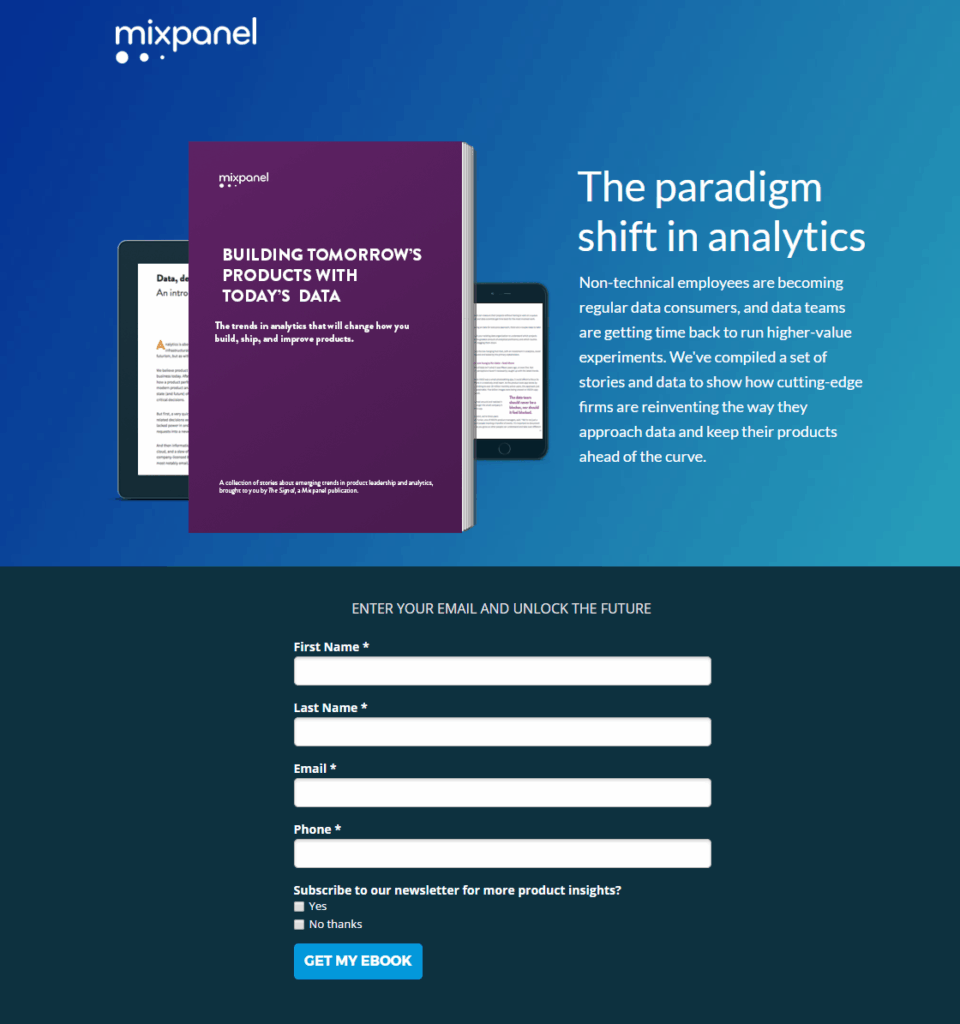
Let’s start with the landing page.
- Keep it clean, focused, and laser-targeted. The page should clearly state the benefit of signing up (“Get our free guide to X” or “Join our newsletter for exclusive Y”) and include a short form for the user’s info.
- And don’t forget visual appeal. Include an image of your lead magnet (if applicable) or a relevant graphic, and use a design that’s consistent with your branding. A well-designed landing page with an optimized form can dramatically boost conversions.
You can check out our landing page best practices guide for a deeper dive into this.
Now, onto the form… and this part really matters.
We strongly recommend using multi-step forms over traditional one-page forms. Why? Because they convert better. Ridiculously better. When you ask one question at a time, you reduce overwhelm and create a natural momentum that keeps people moving forward. It feels more like a conversation than a chore.
Our client Giles Williams, founder & CTO, summed it up well:
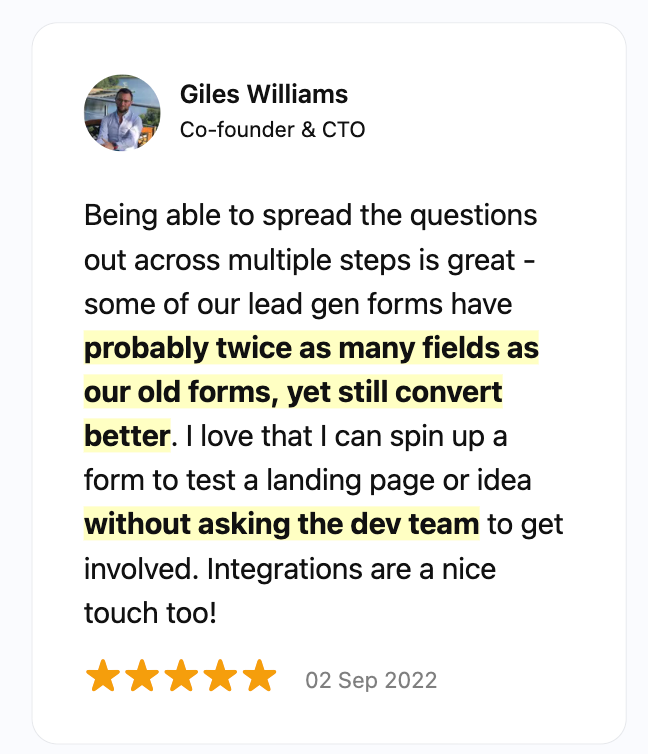
With Growform, you can build multi-step forms backed by years of testing and psychological principles. You can customize everything, from conditional logic to hidden fields, and embed the form on any landing page in just a few clicks.
You can either start with a template…
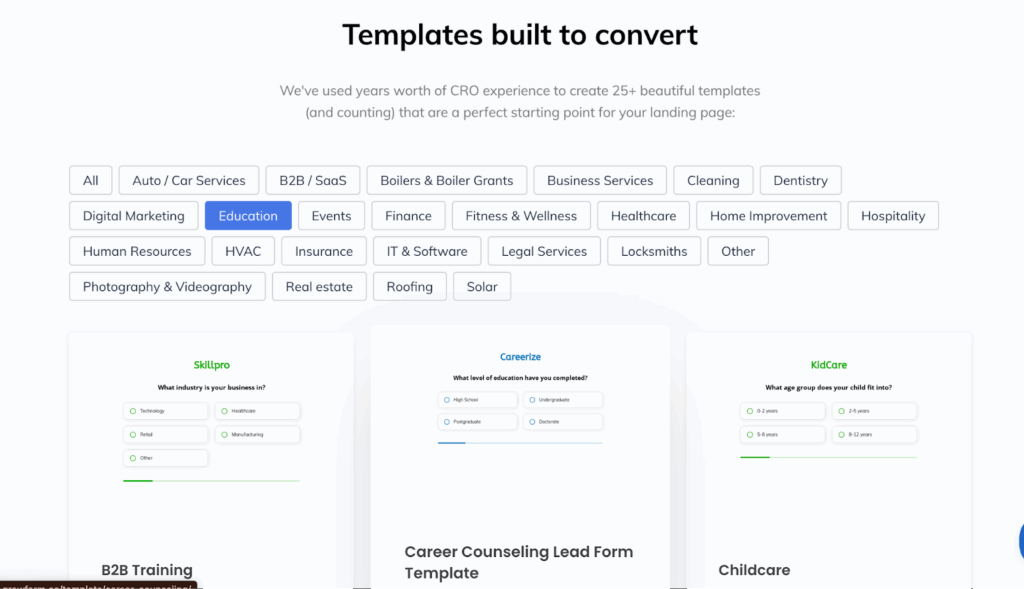
… or build your form from scratch with our intuitive drag and drop interface
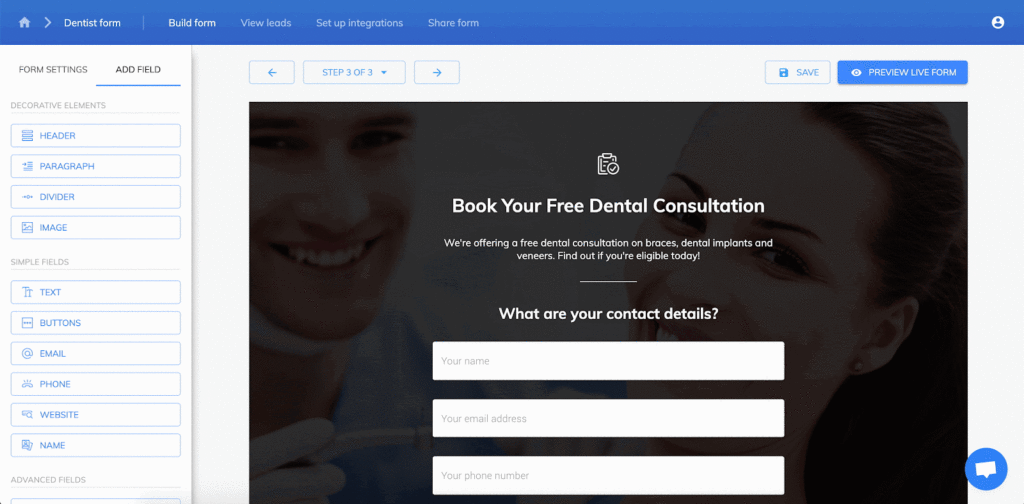
However, a multi-step form is just one (big) part of the equation. You also need to ask for as little information as necessary, usually just name, email, or some basic data to start.
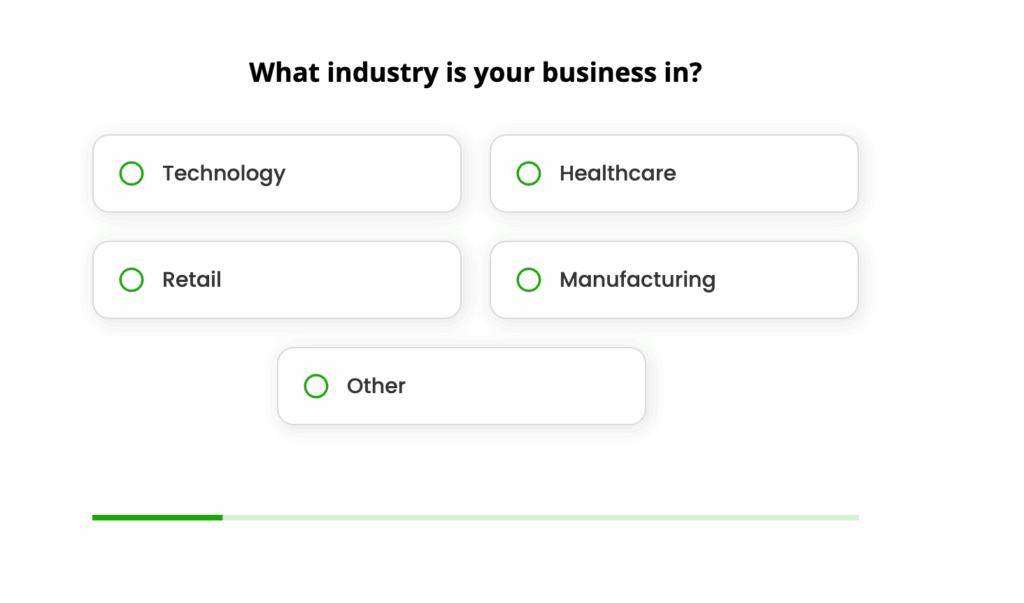
The more fields you require, the more friction and drop-off you’ll see. Users want to spend as little time as possible filling out the form to get the offer they want.”
If you do need additional info (say, B2B leads might fill company name or job title), know that each extra field might reduce sign-ups but yield more qualified leads. It’s a trade-off to consider.
Often, it’s best to keep the initial opt-in minimal and gather more details later (for example, via a follow-up survey or during the onboarding emails).
3. Drive Traffic and Promote Your Opt-In
“Build it and they will come” doesn’t apply to email lists. Once your opt-in funnel is ready, you need to actively send people to it.
Leverage all your channels to promote that lead magnet or newsletter. Add prominent signup forms on high-traffic pages of your website, write blog posts or social media updates that mention your free resource, and consider running paid ads if budget allows.
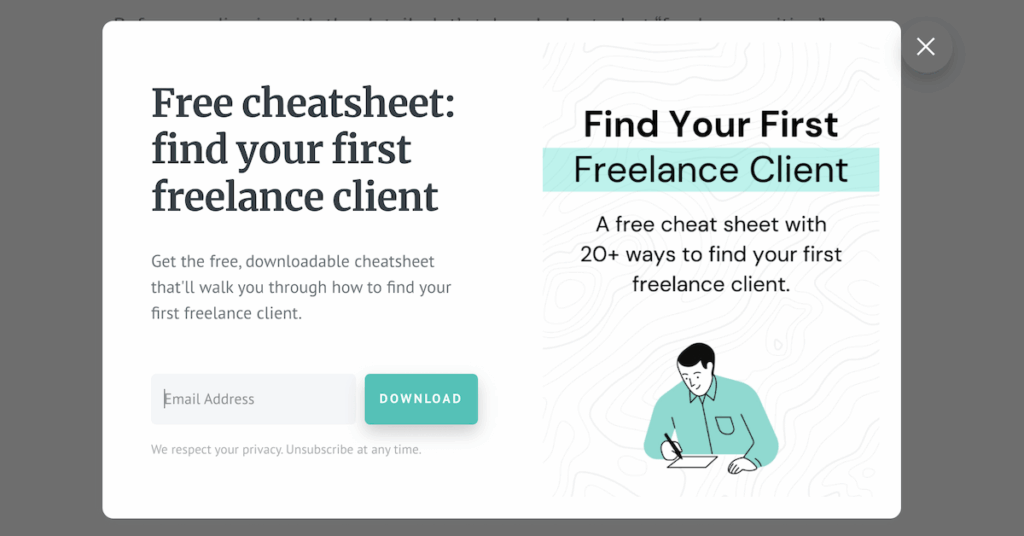
Other tactics include
- Hosting webinars or live events (collect emails at registration)
- Or even running contests/giveaways that require an email to enter.
In some cases, you can also partner with others: e.g., contribute a guest article or co-host a webinar with a complementary business, where you both get to collect signups.
4. Deliver a Warm Welcome (Automate Immediate Follow-up)
The moment someone joins your email list is a critical window of opportunity. They’ve just raised their hand to hear from you – so respond right away!
Set up your email marketing platform to send an automatic welcome email as soon as a new lead opts in. This initial email is your chance to shine:
- thank them for signing up,
- deliver whatever was promised (e.g. a download link or coupon code),
- and introduce what they can expect next from you.
See how SelenaSoo did this below:
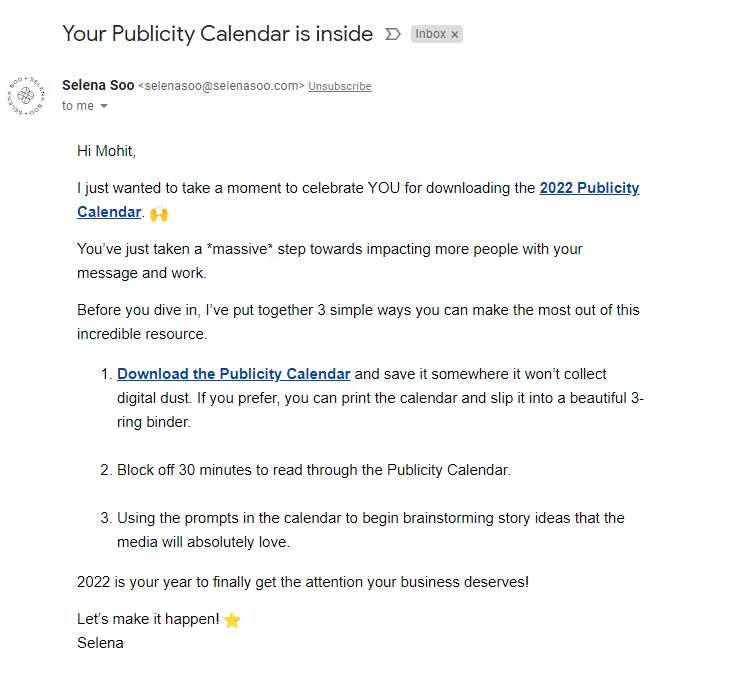
A warm, personal welcome message makes the subscriber feel valued and reassures them that giving you their email was a good decision. It’s also an opportunity to reinforce your brand story or share quick tips.
Pro tip: Many marketers include a small additional call-to-action in the welcome email. For instance, asking the subscriber to whitelist your sender address or even a question to reply to (which can boost deliverability and engagement early on).
5. Nurture Your Leads with Valuable Email Content
Now we get to the heart of lead generation: nurturing.
Adding someone to your list is just the beginning; you need to build the relationship over time with engaging emails. Rather than immediately blasting sales pitches, focus on providing value and education.
A common approach is to create a drip email sequence (also called an autoresponder series) – a predetermined set of emails that go out at intervals to new subscribers.
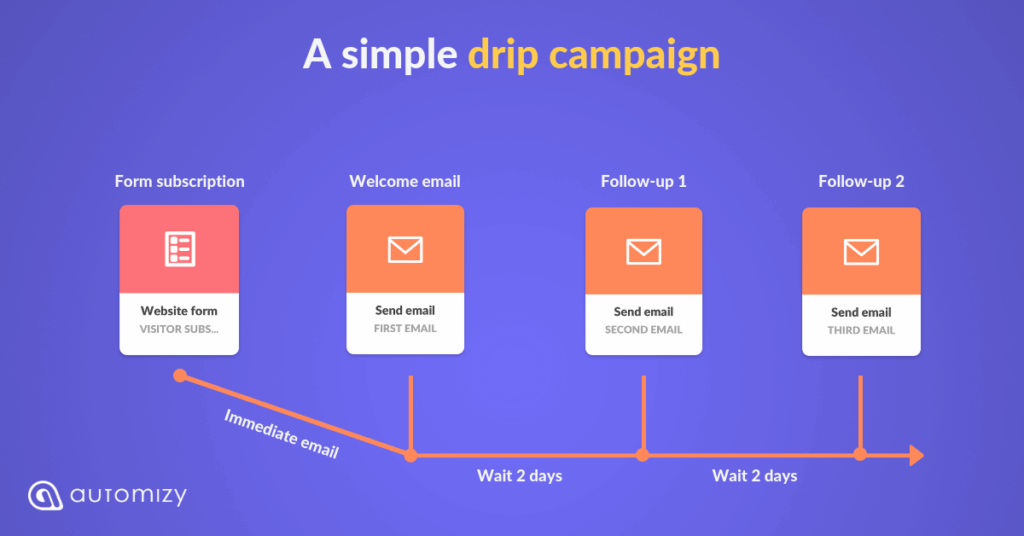
For example
- After the welcome email (Email #1), you might send Email #2 two days later with a helpful tip or a piece of high-value content (like a blog post or video).
- Email #3 could be a customer success story or case study illustrating how others benefited from your solution.
- Email #4 might address common objections or FAQs, and so on.
The goal is to gradually move the lead down the funnel: from initial interest to deeper understanding of your offerings, and building trust along the way.
Each email should be focused on the reader’s needs, not just “about us”.
Talk like a human (not a corporate robot, especially with AI everywhere), use the subscriber’s name, and share insights that are genuinely useful – whether or not they buy anything immediately. This positions you as a trusted advisor.
It’s also wise to segment your leads during this nurturing phase.
If you know certain subscribers are interested in Topic A versus Topic B, you can send them more targeted content (more on segmentation in Best Practices below).
Effective nurturing via email can include:
- Educational newsletters
- “How-to” guides,
- industry news with your commentary,
- Invitations to free webinars or events,
- And occasional quick surveys to learn more about them.
By delivering relevant content, you keep leads warm and engaged, so that when you eventually present an offer, they’re primed to consider it.
6. Convert: Turn Email Leads into Customers
While nurturing is crucial, at some point, you want to ask for the sale or conversion. The exact timing will depend on your business and sales cycle. Some leads might convert after one or two emails (especially if you offered a promo), while others might need weeks or months of interaction.
The key is to include strong calls-to-action in your emails when the time is right. This could be an email inviting the lead to “Start a free trial,” “Schedule a demo,” “Claim your discount,” or “Buy now with free shipping” – whatever your primary conversion goal is.
It’s often effective to create a dedicated sales offer email toward the end of a drip sequence, summarizing the benefits of your product/service and perhaps throwing in a time-sensitive incentive (like a limited-time discount or bonus) to spur action.
Scarcity and urgency tactics, when used honestly, can also nudge fence-sitters to take that next step (e.g. “Only 3 spots left for our course” or “Offer expires Friday”).
Also, don’t limit conversion efforts to just one email. You might send a follow-up or two to those who didn’t act, with slightly different angles (e.g., one highlighting customer testimonials, another addressing common objections).
Throughout the email, maintain a helpful tone: you’re inviting, not twisting arms. If you’ve nurtured properly, your leads won’t be surprised to receive an offer; it will feel like a natural next step.
And remember to celebrate conversions: when someone does become a customer, have an email (or series) ready to welcome them aboard and perhaps even upsell or encourage referrals (happy new customers can refer others, a powerful way to feed the funnel).
Best Practices For Email Marketing Lead Generation
1. Frontload Value Before Asking for Anything
The quickest way to someone’s heart (or inbox) is through genuine value. You can’t expect people to give you their email or pay attention to your messages without offering something worthwhile first.
That’s why the lead magnet strategy is so crucial. Make sure your free content or discount is truly irresistible. It should be highly relevant, solve a problem, or deliver an “aha” moment for your target audience.
Additionally, deliver that promised value promptly, ideally immediately upon signup (via the welcome email or redirect). This builds trust from day one
2. Never, Ever Buy Email Lists (Grow Organically)
This is a cardinal rule. It might be tempting to shortcut the process by purchasing a bulk email list or scraping contacts, but that approach will backfire horribly.
Purchased lists yield no real ROI and can seriously harm your sender’s reputation. Think about it… those people never agreed to hear from you, so best case, they ignore you; worst case, they mark your emails as spam. High bounce rates and spam complaints can get your email account blacklisted by the provider.
Plus, privacy regulations (GDPR, CAN-SPAM, etc.) strictly forbid emailing people without consent. You risk legal trouble by using bought lists. Instead, focus on organic opt-ins through the methods we discussed. The quality of a smaller, permission-based list beats a large cold list every time.
3. Personalize and Segment Your Communications.
One-size-fits-all emails are a thing of the past. To really engage your leads, make your emails feel personal (like a friend who understands their needs is writing to them).
At the very basic level, use the subscriber’s first name in the greeting or subject line (most email tools allow dynamic tags for this).
But go beyond that: tailor content based on what you know about them. If you’ve collected info on their preferences or industry, leverage it.
For example, if you run a travel site and know a segment of your list is interested in adventure travel, send them offers about hiking trips, not beach resorts.
People are far more likely to read and act on emails that resonate with their specific interests.
Marketers often overlook segmentation because it seems like extra work, but modern email marketing tools like MailChimp make it easier (many can auto-segment by behavior). Start small if needed. Even separating active vs. inactive subscribers for different messaging is progress.
4. Test and Refine Continuously (Subject Lines, Send Times, Content)
Even with decades of experience, we’re often surprised by what works best, which is why testing is your best friend in email marketing. A/B testing (or split testing) means trying different versions of an email element to see which performs better.
- You can test subject lines, for example: send half your list “Subject A” and the other half “Subject B” and compare open rates.
- You can test email content or design: does a shorter plain-text style email get more clicks than a long image-heavy one?
- Test send times or days of the week to find when your audience is most responsive.
The beauty of email marketing is that you can base decisions on data rather than hunches.
One insider tip: focus on one variable at a time. If you change the subject line and the email content in one test, you won’t know which change made the difference. Also, ensure you test on a sufficiently large sample for results to be meaningful.
Top Tools for Email Marketing Lead Generation
1. Growform – Multi-Step Form Builder for Lead Capture
If you want to maximize the number of leads you get from your website or landing pages, Growform is a standout solution. It lets you create powerful, conversion-optimized multi step forms with no coding required.
Multi-step forms can dramatically boost completion rates by breaking the process into smaller bites. And specifically, our forms can capture up to 2× more leads by following UX best practices and psychological principles.
You can design forms that look great on any device, use conditional logic (e.g. show extra questions based on earlier answers), and easily embed them on your site.
Growform was built specifically for lead generation, so it includes features like hidden fields for tracking ad campaigns, and one-click integrations to send leads to your CRM or email software.
Our plans start at $59/month, with higher tiers offering more leads, embeds, and advanced features like CNAME hosting and SLAs.
2. Mailchimp – Email Marketing & Automation Platform.
Mailchimp is often the first email tool many businesses use, and for good reason.
It’s an all-in-one email marketing service that covers managing your email list, designing emails, sending campaigns, and tracking results. Mailchimp offers a generous Free plan for those just starting out – it costs $0 and allows up to 500 contacts with 1,000 email sends per month.
The platform provides an easy drag-and-drop email builder with lots of templates, so you can create professional-looking newsletters or drip emails without design skills. It also has built-in basic automation (even on free tier). For example, you can set up a simple welcome email or a birthday email to send automatically.
3. HubSpot (Marketing Hub and CRM) – All-in-One Marketing & Lead Management.
HubSpot is a heavier hitter.
It’s a platform that combines a free CRM with powerful marketing tools, including email, forms, landing pages, and analytics. If you’re looking for a scalable solution that can grow with your business, HubSpot is worth a look.
With HubSpot’s Marketing Hub, you can do everything from building custom landing pages and blog posts, to creating email drip campaigns and scoring leads, all in one place.
Pricing starts at ($15/mo/seat) for Starter and ($890/mo) for the Marketing Hub plan.
Streamline Your Email Marketing Lead Generation With Growform
The real challenge in email marketing isn’t always writing better emails; it’s making sure the right people are receiving them.
That’s where Growform comes in. It’s built specifically for lead generation, with multi-step forms designed to qualify users before they ever hit your list. You can guide visitors through tailored journeys using smart logic, capture valuable data like UTM parameters, and sync everything directly with your email or CRM tools. So you only generate qualified leads.
Start your free 14-day trial with Growform today, no credit card required.
Recent Posts
- Anatomy of a Landing Page: 12 Essential Elements for Higher Conversions
- 8 Best Webinar Landing Page Examples to Boost Signups
- 10 Best ClickFunnels Landing Page Examples That Actually Convert
- How to Improve Landing Page Optimization and Boost Conversions
- Landing Page Metrics That Matter: 12 KPIs to Boost Conversions
